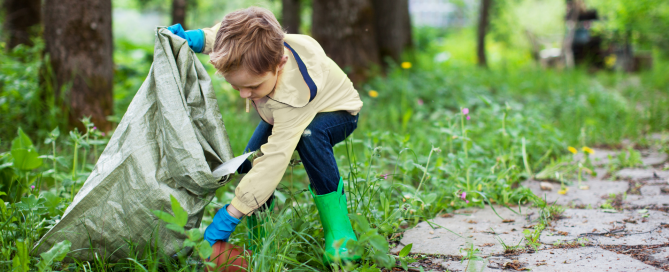Environmental Science Degree: Is It a Good Investment in The Future
The world we live in today is rapidly transforming, and with that change comes a demand for higher-skilled workers. In the coming years, the outlook for getting and keeping good jobs in a high-demand field like Environmental Engineering looks promising. In fact, according to the U.S. Bureau of Labor Statistics, Environmental Engineer jobs are expected to grow 16% from 2016 to 2026, which is faster than the national average of 11%.
Do you think about a career change? Are you wondering what kind of job you could get after earning a degree in environmental science? While the average person may look at an environmental scientist as someone working in a laboratory or outdoors, the field has far more diverse career opportunities than most people realize. Environmental scientists work in a wide variety of areas, including conservation, pollution control, and restoration.
Figuring out the best path for future employment can be challenging, but an environmental degree can offer a number of benefits. Earn a degree that is green friendly, like the Environmental, Health, and Safety Degree. This program focuses on the evolution of environmental law, sustainability, pollution, and natural resource management. Go back to school to study sustainable practices and become an environmental specialist or ecologist.
The environmental degree has recently been getting a lot more attention as it is becoming increasingly clear that environmental issues are going to get much worse, not better.
Environmental studies, also known as environmental science, has become one of the fastest-growing fields in the US. The Department of Labor predicts that employment for individuals with bachelor’s degrees in environmental studies or related fields will continue to rise by almost 12% between 2014 and 2024, much faster than average job growth. This field is an excellent choice for those seeking a hands-on, practical education that allows them to gain valuable skills.
Do you want to make a difference in the world of the environment? Then an environmental degree may be for you. Are you interested in studying things such as global warming, pollution, recycling, sustainability, the greenhouse effect, or biodiversity? If any of this has piqued your interest, an environmental degree could be the perfect option.
Many people (and businesses) are looking for ways to reduce their carbon footprint and be more environmentally responsible. An environmental degree can help you gain the knowledge you need to pursue a career in this field. Not only will you learn how to help protect the environment, but you’ll also learn about how businesses, organizations, and governments impact the environment and how individuals can make an impact as well.
An Environmental Science degree can also prove to be an excellent investment for individuals who own or manage expansive land tracts. As stewards of significant portions of our environment, these landowners bear a responsibility to balance development with ecological preservation.
An Environmental Science education equips them with the knowledge and skills needed to make informed decisions that promote sustainability. Particularly relevant for those with vast land holdings the degree can help you better partake in sustainable Logging practices and wildlife control, enabling landowners to manage forests responsibly while ensuring long-term environmental health.
The environmental studies degree provides students with a solid knowledge base of basic environmental science and interdisciplinary policies. Environmental studies students must learn about the operation of ecosystems and species. They must also learn to study human behavior, ethics, and economics, which affect environmental issues.
Investing in an environmental degree online can be a great way to begin a career in the environmental field. Most programs offer flexible courses for students, allowing them to work at their own pace while getting an education. Students who choose to work full-time while attending school can usually take classes at night, on the weekends, or even online, convenient for those trying to balance work and school. E-learning has certainly become a boon for people who cannot attend classes in the regular mode. And anyone eager to learn a new skill can avail of its benefits, given they have access to a smart device and a stable internet connection (or one of those high-speed internet and tv bundles).
A career in environmental science is much more than dealing with nasty chemicals and pollutants. Environmental scientists are increasingly needed in fields like business, law, engineering, energy, agriculture, and healthcare. Companies are creating positions for and recruiting environmental experts to consult on a number of aspects related to sustainability. These jobs are limited and highly coveted as they pay quite well. Those applying for such jobs need to put their best foot forward right from the start, which means presenting an eye-catching resume (perhaps made by experts at https://www.arcresumes.com/) that gets you an interview, where you can showcase all your expertise. You need to show prospective employers that you’re up to date on the latest scientific and technological developments, and through guided projects, have gained hands-on experience, as well as developed strong communication, leadership, and problem-solving skills.
Environmental engineering is a profession that will provide you with the ability to assess, manage, and remediate environmental problems, whether on land or in water. If you want to make a difference for our planet, this degree is an excellent choice for you.
Environmental degrees are not necessary for every career path, but they are valuable additions to a wide variety of job fields. Environmental degrees help students gain a greater understanding of science and how it affects the environment while also giving them the tools they need to work in the field.

